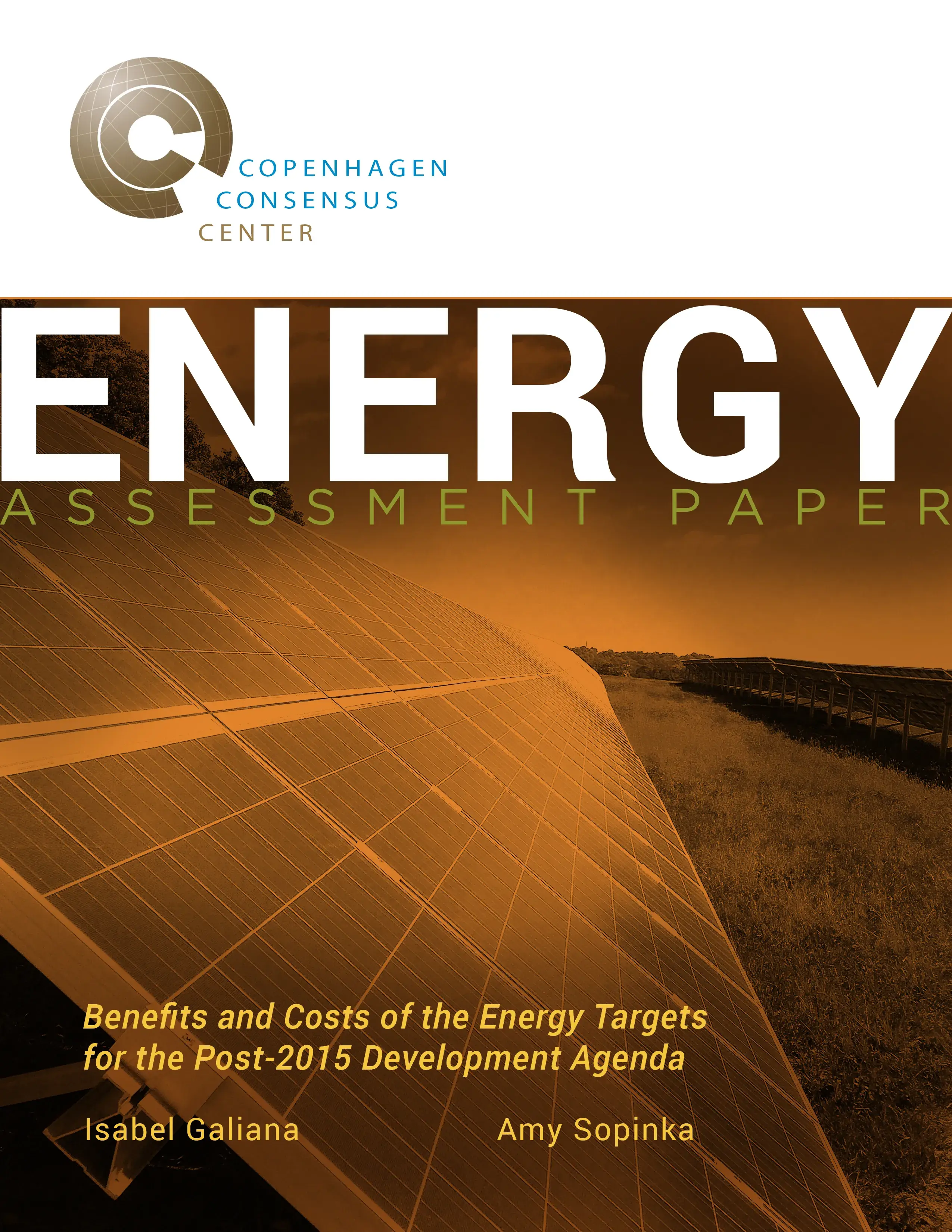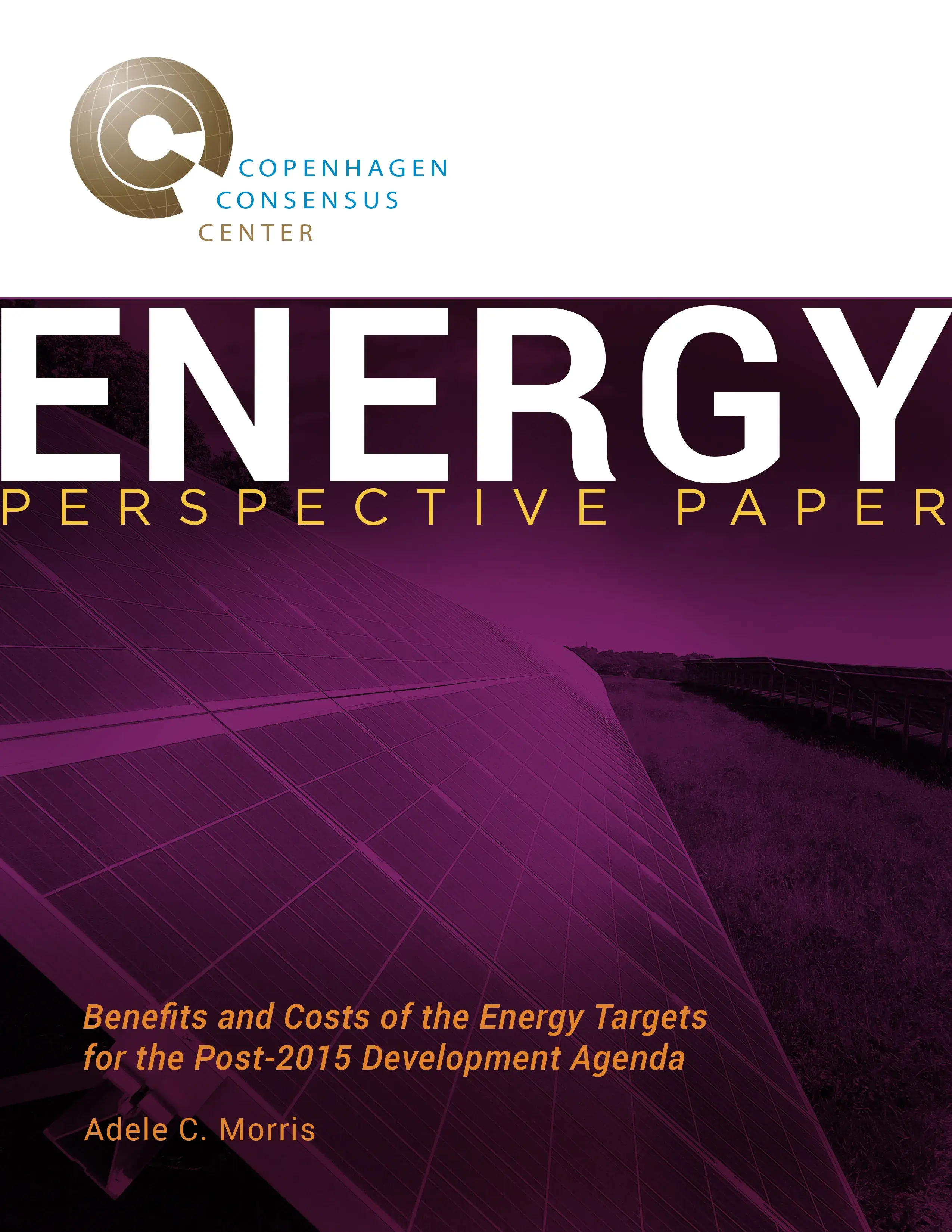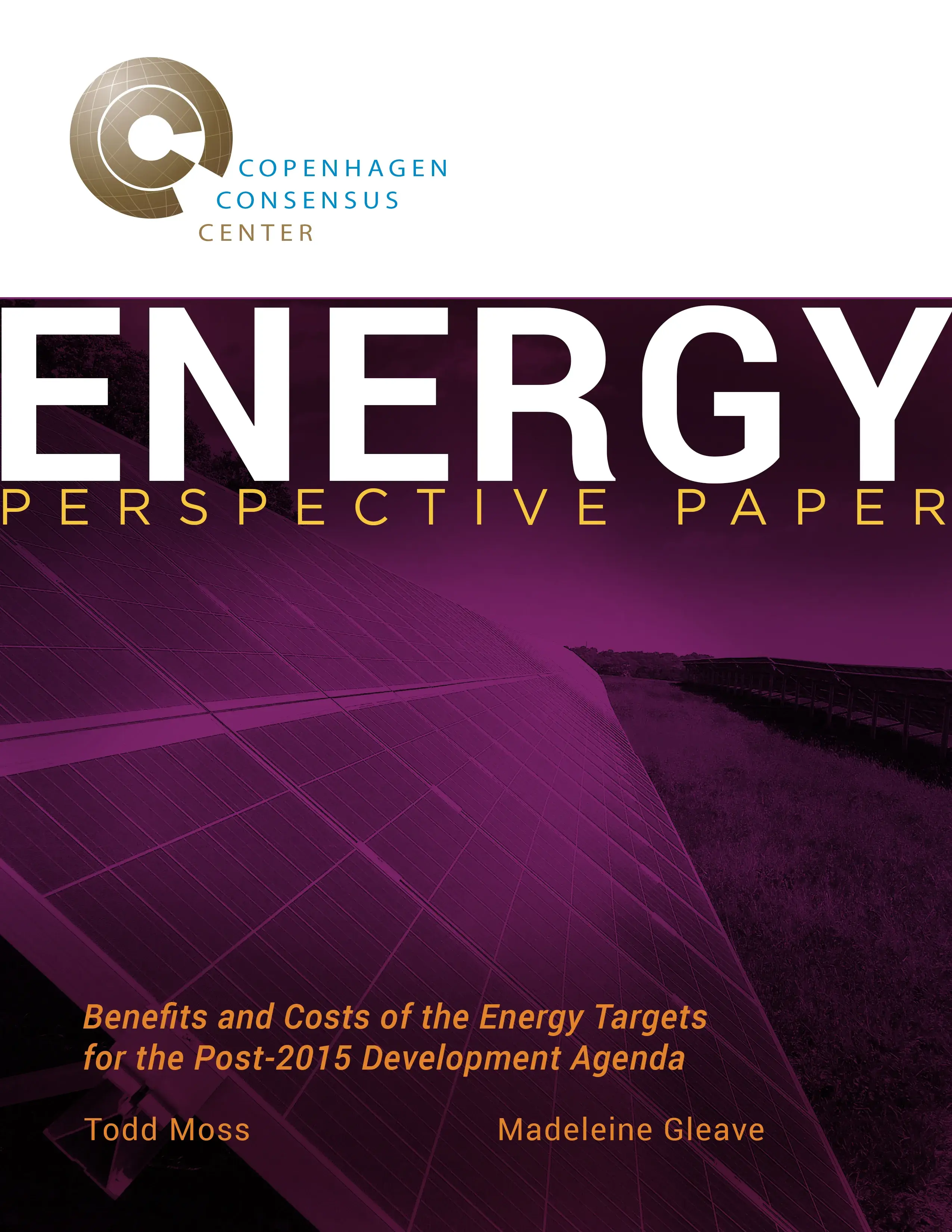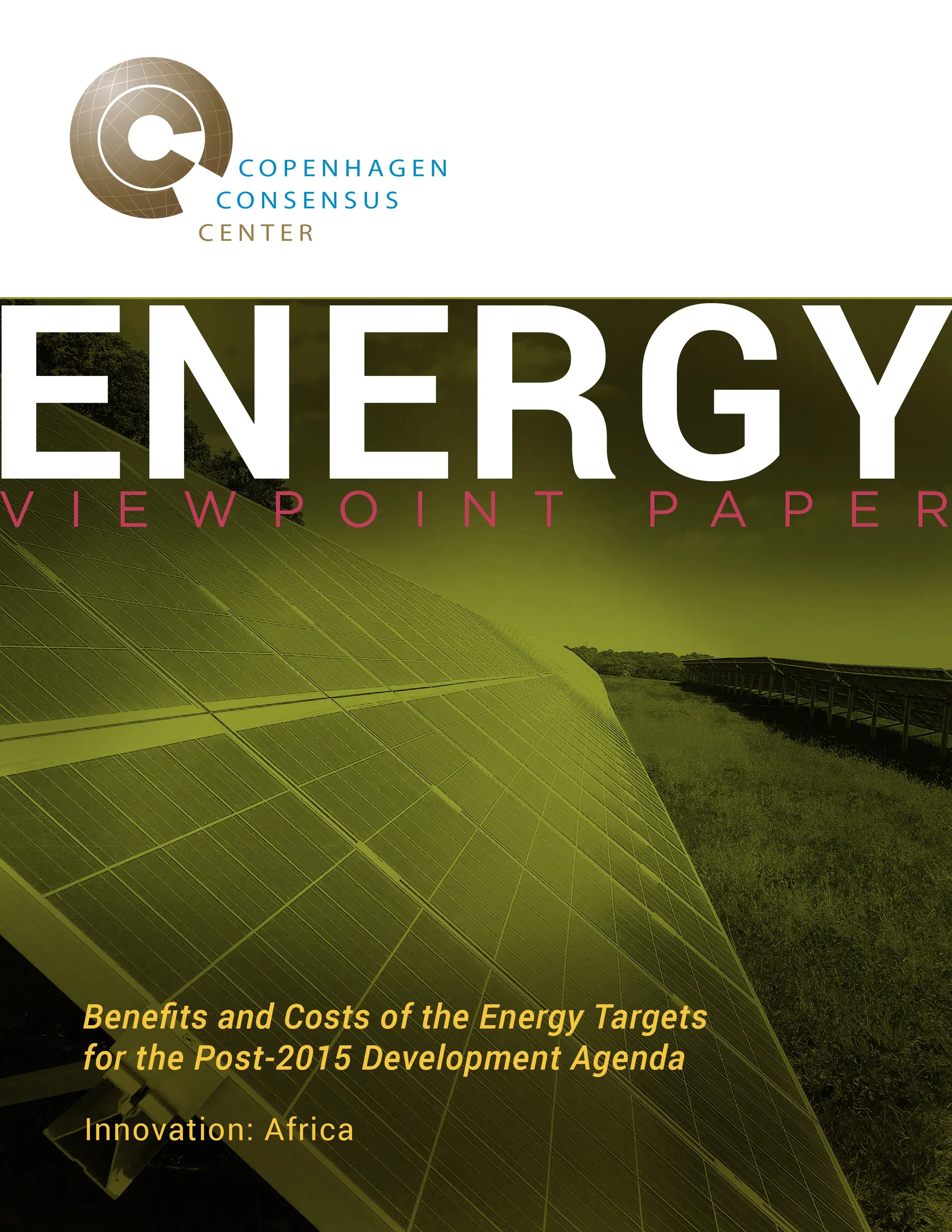Energy
Within Energy, the targets that have the highest benefit-cost ratio are:
- Double research, development and demonstration (RD&D) in energy technologies which has a benefit of $11 for every dollar spent. All energy targets depend on further technological developments in storage, transmission and distribution, transportation, efficiency etc. Actively seeking these technologies through targeted RD&D programs will expedite the global energy transformation required to provide sustainable energy access for all.
- Provide access to modern cooking fuels to 30% of the current unserved population which returns $15 for every dollar spent. The reduction of indoor air pollution from burning wood, dung, coal and other solid fuels-has massive benefits. The estimated benefit cost presented here is quite conservative given the potential to radically improve the lives of the world’s poorest.
- Phase out fossil fuel energy subsidies which has benefits of 15 times the cost. This target yields particularly high benefits for developing countries if revenues are appropriately recycled.
Valuable targets are:
- Universal access to modern cooking facilities, universal energy access and universal electrification access has the benefit of $9, $7 and $5, respectively, for every dollar spent. These are all valuable targets but the universality of the target implies increasing costs at the limit and thus suggests a more restrained target would result in greater benefit-cost ratios.
- Double the rate of energy efficiency improvement globally which will return $3 for every dollar spent. Improvements in efficiency reduced energy prices through lesser demand ease infrastructure needs and frequency of temporary power shortfalls as well as improve industrial competitiveness.
The following targets are relatively ineffective:
- Double the share of renewable energy in the global energy mix which would return less than a dollar for every dollar spent. Until the issues of intermittency and storage are resolved through RD&D, this target is excessively costly.
Scroll down to read our set of reports examining energy targets for the post-2015 development agenda, written by leading economists and experts.
Assessment Paper
In a broad and expansive paper, Isabel Galiana, Lecturer in the Department of Economics at McGill University and Amy Sopinka, Senior Research Analyst at Institute for Integrated Energy Systems at University of Victoria, examine the costs and benefits of various targets related to energy access.
They argue that increasing access to modern energy, through expanded electrification and improved cooking facilities, is an effective target, which reduces deaths and disease from indoor air pollution and provides other welfare benefits. Providing this to 30% of people who currently are not using these fuels, is the most cost-beneficial. They also show that renewable energy targets are generally ineffective, with targets to eliminate fossil fuel subsidies and double RD&D in energy technologies considerably superior from a benefit-to-cost perspective. Finally, energy efficiency targets provide modest benefits relative to costs.
Energy is essential to development and as such any target that stimulates greater energy access will yield positive benefit cost ratios. Moreover, if inequality is considered, energy access becomes the most important target."
- Isabel Galiana and Amy Sopinka

Perspective Paper
Adele C. Morris, Policy Director of the Climate and Energy Economics project at Brookings Institution, agrees with the assessment paper authors’ assessments that increasing access to modern energy is valuable, while expanding renewable energy is not. However, she argues that aiming to increase energy efficiency at a macro-economic level does not make sense, since energy intensity is primarily affected by the underlying sectorial composition of an economy.
Morris also suggests an additional target: Phase out implicit fossil fuel subsidies by imposing energy taxes that reflect external costs, which has benefits 8 times their costs.
One should not conflate the energy intensity of the macroeconomy (BTU/GDP) with the energy use of a household or firm or the energy efficiency of a particular product.”
- Adele C. Morris

Perspective Paper
Todd Moss, Chief Operating Officer and Senior Fellow and Madeleine Gleave, both of the Center for Global Development, critically examine whether the International Energy Agency's definition of 'modern energy access' is sufficient to lead a dignified life. They argue that the current standard of 100kwh per person per year is inadequate and instead offer three alternative definitions that would be more suitable measures of modern energy access.
An average of 100 kWh/year equates with powering a single 60 watt light bulb for five hours per day for a year. This is closer to a definition of energy poverty than anything remotely close to a modern or dignified standard of living. The gaps are especially stark when compared to common western lifestyles, where an average American would consume 100 kWh in about three days"
- Todd Moss and Madeleine Gleave

Viewpoint Paper
Rachel Ishofsky, Managing Director of Innovation: Africa commends the assessment paper for its exploration of social, environmental and financial issues in working towards the Decade of Sustainable Energy for All’s (DSEA) ambitious goals. However, as an expert in off-grid energy access in Africa, Ishofsky adds an alternate viewpoint to the debate surrounding energy in the post-2015 agenda based on the experience of an individual who has established a career working in energy access.
In 6 years, we’ve completed 82 solar installations impacting 678,928 people. That isn’t many in terms of the scope of the problem, but we’ve managed to do this with a total of less than US $3 million. Which means that we’ve brought clean water, improved education and proper medical care to nearly 700,000 people at a cost of less than $5 per person. And this is without factoring in economies of scale.
-Innovation Africa

Viewpoint Paper
The viewpoint written by Lungile Mashele, Energy Sector Specialist for the Development Bank of Southern Africa, discusses the 6 energy targets proposed in the assessment paper, determining which ones are viable or which are not. Ultimately, the paper concludes that governments need to implement policies based on their developmental impact and return on capital.
Opportunities in the energy sector abound globally, especially in emerging markets that are looking at additional capacity. However the following catalysts for change should be taken into account: costs, policies, economics and environment.”
-Lungile Mashele

The Post-2015 Consensus project brings together 60 teams of economists with NGOs, international agencies and businesses to identify the targets with the greatest benefit-to-cost ratio for the UN's post-2015 development goals.




